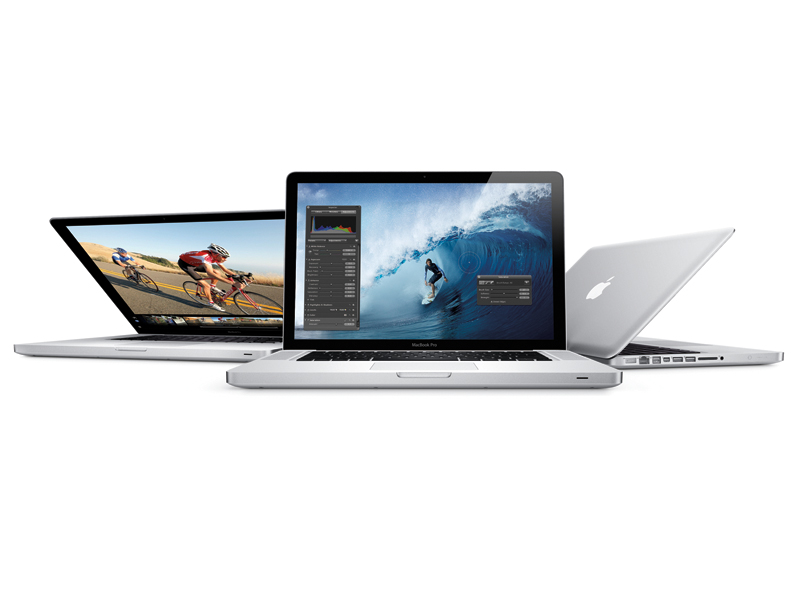Why you can trust TechRadar
Specification
This top-of-the-range 17-inch MacBook Pro has near-identical specs to the more expensive of the two 15-inch models.
Both offer a quad-core 2.2GHz Core i7 processor, 4GB of 1,333MHz RAM, an AMD Radeon HD 6750M discrete graphics processor with 1GB of GDDR5 memory, a 750GB, 5,400rpm SATA hard drive and a built-in seven-hour battery, which cannot be replaced by the end user, but lasts for around three times as many charge cycles as a standard notebook battery.
Similar custom options are available at the Apple online store too. You can beef up the processor to a quad core 2.3GHz Core i7, expand the RAM up to 8GB and you can replace the hard drive with a smaller but faster 500GB 7200rpm model, or even a solid state drive.
The new Sandy Bridge processors, built using Intel's 32nm process, benefit from a redesigned micro-architecture where the processor, cache, memory controller and graphics engine are integrated on a single chip. This means data has less distance to travel.
For example, an integrated memory controller connects the processor directly to the RAM. With no bus to slow it down, the processors can spend their time processing data instead of waiting for it to arrive.
The Sandy Bridge Core processors offer a similar feature set to the previous generation of Core chips, but many of their key features have been improved. For example, Turbo Boost has been reinvented as Turbo Boost 2.0, with several advances over the first-generation chips' Turbo Boost feature.
When The MacBook Pro is running processor-intensive tasks and the CPU is operating within specified temperature, current and power limits, Turbo Boost 2.0 automatically allows its cores to run faster than the base operating frequency.
If not every core is active, it can shift power away from idle cores to the operational ones, but even if all four cores are being used it can give them a smaller speed increase. Turbo Mode is activated more often and used for longer periods than before, and the quad-core 2.2GHz Core i7 used in this MacBook Pro can reach 3.3GHz under Turbo Boost 2.0.
Hyper Threading is now standard on every MacBook Pro, and allows two threads to run simultaneously on each of the processor's cores. The quad-core processor used in this particular model therefore has eight virtual cores.
Thanks to Hyper Threading, applications optimised for multicore processors run smoother and faster as tasks are spread more evenly, and the computer is able to multitask with greater efficiency.
The second-generation Core i7's processor graphics have been revamped. Intel HD 3000 Graphics are on a par with the most powerful integrated graphics chipsets. An integrated video decoder saves on battery power when watching movies, and a built-in encoder lets you make HD video calls using Apple's FaceTime.
When running graphically intensive applications, graphics processing automatically switches to the MacBook Pro's powerful new AMD Radeon HD 6750M discrete GPU.
The 17-inch MacBook Pro includes a single Thunderbolt port, alongside a FireWire 800 and three USB 2.0 ports.
Based on PCI Express and DisplayPort technologies, Thunderbolt is a brand-new dual-channel I/O protocol that's capable of data transfer speeds of up to 10Gbps in both directions, carries a higher-than-HD video signal and eight-channel audio, and can support up to six daisy-chained peripherals in a single port.
Thunderbolt provides native support for mini-DisplayPort screens, and you can connect a DisplayPort, DVI, HDMI or VGA monitor using existing adapters.
The built-in webcam, a 720p FaceTime HD camera, has three times the resolution of the old iSight camera and better low-light performance. Unlike the rest of the MacBook Pro range, the 17-inch model doesn't have an SD card reader. It has an ExpressCard/34 slot instead, so you can fit a card reader if you wish.
Current page: Apple MacBook Pro 17" (2011): Specification
Prev Page Apple MacBook Pro 17" (2011): Overview Next Page Apple MacBook Pro 17" (2011): Performance